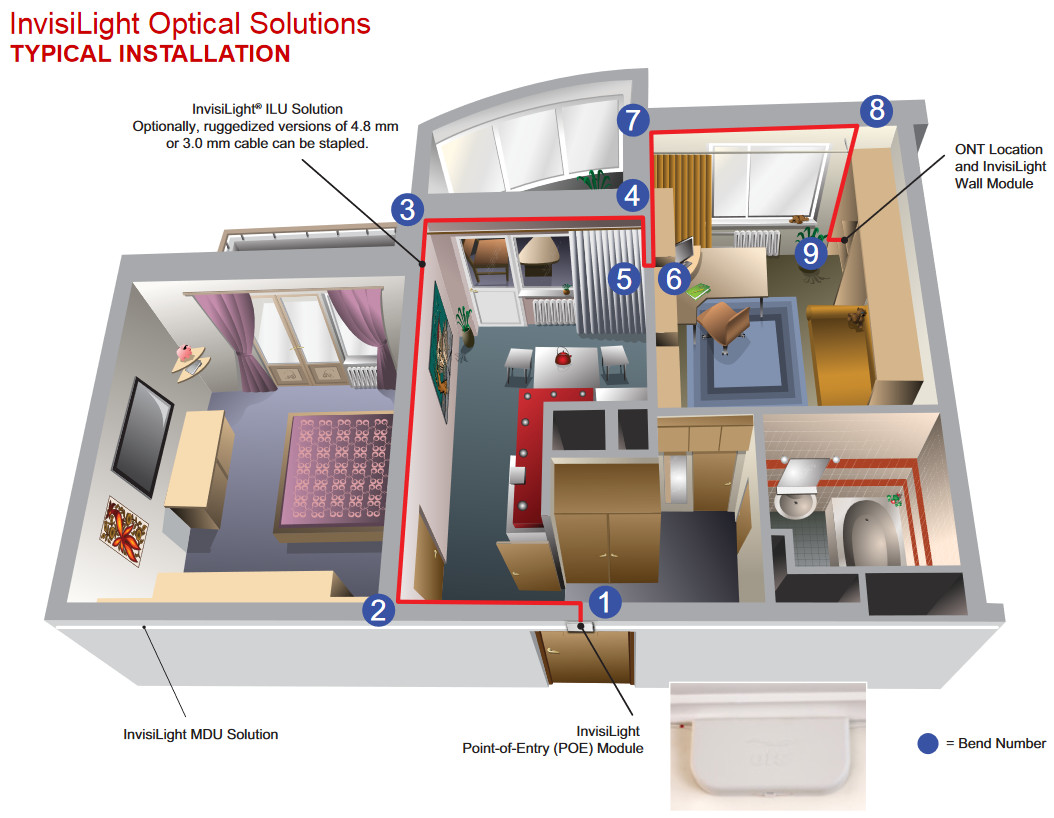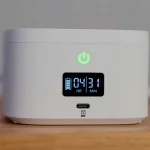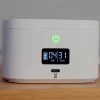Full Fibre UK ISP Hyperoptic Adopt InvisiLight to Cut Rollout Costs

City-focused internet provider Hyperoptic, which is currently deploying 1Gbps capable “full fibre” (FTTP/B) broadband networks across large residential buildings (MDUs), office blocks and houses, has adopted InvisiLight technology from OFS to help cut the time and cost of retrofitting fibre into existing sites.
At present Hyperoptic’s gigabit fibre network is currently present in parts of 43 UK towns and cities across well over 400,000 premises, although they have previously expressed an ambition to cover 2 million UK premises by the end of 2021 and then 5 million come the end of 2024 (mostly in urban areas).
A lot of this work involves going into existing Multiple Dwelling Units (MDUs) and for the most part those can be upgraded for relatively little money, but this isn’t always the case and sometimes particular buildings could end up costing into the low tens of thousands. At which point the deployment may become unviable.
Advertisement
One partial solution to this is InvisiLight, which is a discreet way of deploying fibre as part of a retrofit for existing buildings, but this does mean running a fibre down walls and alongside skirting boards or coving (i.e. exposing it to greater risk of accidental damage). However, this approach can cut down on the need for things like power and trunking, which saves a lot of time and thus money.

The discreet cabling can used in both hallways and customer homes. Installing optical fibre horizontally on each floor can be extremely challenging, especially in buildings without existing duct, coving or free space. In these cases, the deployment options are limited to cutting and patching drywall to hide the fibre optic cables. This is a slow, expensive approach, which also requires more engineers.
Hyperoptic’s discreet cabling solves these challenges, as it can follow the natural line of an existing wall and is only 2mm in diameter. Any holes that require drilling can be positioned in a corner or ceiling duct, where they are less likely to be seen. No hatches or reinstatements are needed, and it can be applied with a tiny bead of adhesive – minimising the need for clips and fixings.
Advertisement
The cabling terminates above the customer’s door, with a small access box that allows installation teams to run a small connectorised fibre inside to connect the service. The in-home installation itself takes approximately 30-45 minutes. Inside the home, the discreet cabling can fit into tiny spaces and blend into the aesthetics of a resident’s home to maintain aesthetics.
Liam McAvoy, Hyperoptic’s MD of Business Development, said:
“Deploying fibre inside buildings can be difficult and expensive. Our new discreet service is fast to install, practically invisible, and can be surface-mounted in hallways and between floors, to seamlessly connect residents to our gigabit-enabled services.
We’re committed to providing a best-in-class service that enables us to go beyond the expected for our 250+ developer partners. By using this new discreet cabling, we’re taking our installation experience to the next level.”
Openreach (BT) have been using the same solution since 2019 to help tackle similar sites and our sources inform us that Hyperoptic first started using it in January 2021, although until today we haven’t been able to confirm that.
The operator informs us that this new system is expected to “increase the speed of service delivery [in MDUs] by up to 50%,” while also reducing in-building disruption. You can see a video of how this works below, although it’s for a slightly different solution from the MDU focused approach.
Mark is a professional technology writer, IT consultant and computer engineer from Dorset (England), he also founded ISPreview in 1999 and enjoys analysing the latest telecoms and broadband developments. Find me on X (Twitter), Mastodon, Facebook, BlueSky, Threads.net and Linkedin.
« Virgin Media UK Trial Teleste’s Distributed Access Architecture
Openreach Adopt 1 Month Terms for UK FTTP Broadband Lines »





















































They’ve just deployed this tech to the whole of Bath Riverside in Bath (a recent brownfield development) that was an Openreach FTTP only (no copper) site.
I was surprised they invested in their own fibre when the whole site is already only-fibre, but the costs of this must make that approach viable now.
Fast forward 20 years and every house will have an fibre entry point looking like this: https://i.pinimg.com/originals/9b/23/9f/9b239fada3703410427ed92f7215eeed.jpg
I use this stuff quite extensive within my own home to provide discrete connectivity without needing any drilling.
Can’t recommend it enough. Working great for me.
I’m interested in how you use this for home connectivity. What exactly do you use it for? A replacement for internal ethernet cabling to RJ45 wall sockets? Or is it more just the link between routers/switches?
One of the main reasons I haven’t cabled my house is due to my wife telling me she doesn’t want me to knock great holes in the wall so this sounds like a promising alternative if I fully understand its uses and limitations.
I think CarlT revealed some months ago that the cabling in his house was 8 (?) core telephone wire and not Cat5 so he couldn’t get a connection from the entry point under his stairs to anywhere for decent WiFi or plug in coverage.
I hope I got that right!
It links switches. I’ve 4 runs of it connecting 5 switches, 4 switches in a star and another daisy chaining off a switch.
Have to have powered equipment either side to provide the light. I use Mikrotik CRS305s and CRS309s with 10G BiDi optics.
This is a great innovation but has some practical issues for MDU.
For new build it’s still best to use standard cabling in walls / ceilings.
For retro fit we’re already at point where Invisilight overbuild is a reality.
In our building Openreach are installing Invisilight along the corridors. This is great as no access hatches are required. We now have 2 more providers (Hyperoptic being one of those) who also want to run Invisilight! Only 1 can be run along the ceiling. The result is that we’ll likely end up with a mix of with Invisilight and hatches going forwards…
Openreach have been using this for years , good stuff and makes for good appearance .
They don’t appear to have any consumer focused product, must be expensive.
We have this in our MDU installed mid-March however we’re not live yet. Looks neat but my worries are damage as some selling a are low and people can reach fibre cable. It also goes round CCTV cameras so quite possible someone can damage it.
I’ve also seen one POE cover from above the door is already missing… not sure if someone nicked it or it didn’t get installed.
Or it fell off and couldn’t be put back on, and was then thrown away.
Too quick to assume the worst.
They will need to be using metal fixings rather than plastic and or glue for this stuff nowadays
Have you used Invisilight, Bubble?
The recommended glue holds it fine. Not sure why plastic wouldn’t be adequate to hold multiple strands.
The stuff I use is 3 mm diameter and very light indeed.
Huge contrast from the copper cables you may be more familiar with.
Need to use non flammable fixings, T
The OFS Invisilight adhesive is non-flammable and kits come with nozels specified for 2-16 fibre cable sizes.
Invisilight should only be used for drops so cabling up to splitters will be more conventional stuff.